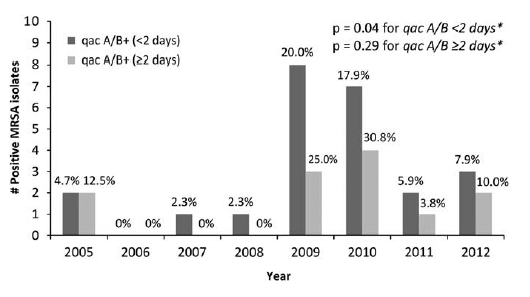Putting contact precautions in their place
 Last September, I had the honor to attend the Infection Prevention Society's Infection Prevention 2016 conference in Harrogate, England. During the conference, I was fortunate to meet Professor Graham Ayliffe and give the annual Ayliffe Lecture on the Science Behind Hand Hygiene and I also got to meet and discuss infection control with many of the dedicated members of the Society. Attending the IPS conference was a great way to learn how infection control interventions are implemented in other countries.
Last September, I had the honor to attend the Infection Prevention Society's Infection Prevention 2016 conference in Harrogate, England. During the conference, I was fortunate to meet Professor Graham Ayliffe and give the annual Ayliffe Lecture on the Science Behind Hand Hygiene and I also got to meet and discuss infection control with many of the dedicated members of the Society. Attending the IPS conference was a great way to learn how infection control interventions are implemented in other countries.In particular, I greatly enjoyed meeting and debating! Dr. Fidelma Fitzpatrick of The Royal College of Surgeons in Ireland and Beaumont Hospital in Dublin. I was charged with debating For contact precautions and Fidelma was charged with Against. At the end of the debate, we realized that there was much common ground in our understanding of where and when to implement contact precautions for MDRO prevention. In particular, we realized that the underlying context in which contact precautions are implemented, de-implemented or studied is critical. And by context, we mean things like availability of single rooms or the baseline (poor) hand hygiene compliance in your hospital. With that in mind, Fidelma and I just published what we learned in a JHI opinion piece called Putting contact precautions in their place. In addition to highlighting the very poor evidence supporting de-implemention of contact precautions, we concluded:
"Where we implement or de-implement CPs will depend on how we frame the literature findings and our local institutional infrastructure, epidemiology, specific MDRO rates, patient factors, and institutional culture along with the local staffing and laboratory capabilities."
Jon Otter at the Reflections blog had a nice overview of our debate. He concluded:
"It was a slightly odd set-up in that Fidelma was arguing against contact precautions from a hospital that uses them, and Eli was arguing for contact precautions from a hospital that doesn’t! But I got a sense that the debaters were putting across genuine views, and not talking to a side of the debate they didn’t subscribe to. My conclusion: contact precautions make sense and fulfil the logical idea of ‘disease segregation’. The studies that seem to show stopping them makes no difference are probably explained to a large degree by the fact that they’re not done right in the first place! It was interesting that all agreed that you should apply contact precautions for the ‘really bad bugs’ (like CPE and C. difficile diarrhoea), so what is the logical difference between these and other organisms?"
Post debate, the attendees were charged with voting Against or For the motion supporting contact precautions with their feet. A fun idea!




Comments
Post a Comment
Thanks for submitting your comment to the Controversies blog. To reduce spam, all comments will be reviewed by the blog moderator prior to publishing. However, all legitimate comments will be published, whether they agree with or oppose the content of the post.